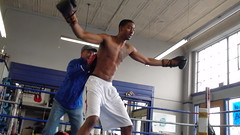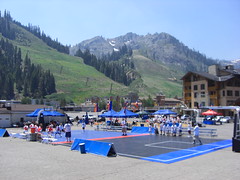Being quick on the court isn’t all about genetics. According to Michael Atkinson, Elite Pro Performance national consultant and A.C.E. certified personal trainer, “While it may seem that some of the best basketball players in the world were naturally born with an explosive first step, training can help gain fractions of a second on your first move.” And those fractions of a second can be the difference between an uncontested layup and a turnover.
No matter what exercises or drills are included in a basketball speed workout, the following are crucial training points:
Positioning/Posture
A proper base and stance allows for more explosive movements in workouts or during games, without risking injury. “Force is generated from the ground up,” says Atkinson. To gain any increase in speed, the athlete must be stable and balanced with a slight knee bend throughout each and every movement.”
Leverage
After building a solid base, the athlete can learn how to generate force from that position. A strong athletic stance provides leverage by increasing the ability to gain maximum extension through the body, resulting in more power and faster acceleration. It’s difficult to push off a defender or move freely through space without being stable from the ground up.
Reaction
This is a movement generated in response to an external force, which could come from a partner during a training session or a defender during a game. Don’t just shoot around; practice specific situations.
Footwork
Get quicker starts by becoming more efficient with footwork. That means working on quick steps, counter-movements, pivots and jab steps—the kinds of steps commonly taken during a game.
Deceleration
Redirecting force in a different direction is the key to staying tight on defense and breaking free on offense. Straight-ahead speed is great, but without the ability to decelerate, it’s useless on a basketball court.
For exercises that work on all five key aspects, head over to STACK Basketball.
Source: Elite Pro Performance
Photo: au.ibtimes.com























